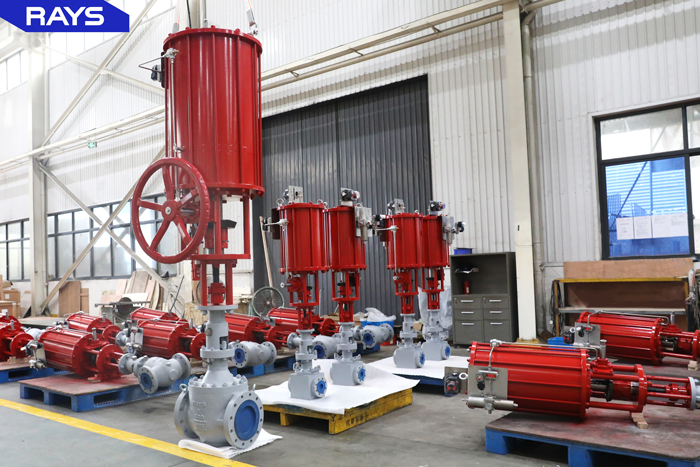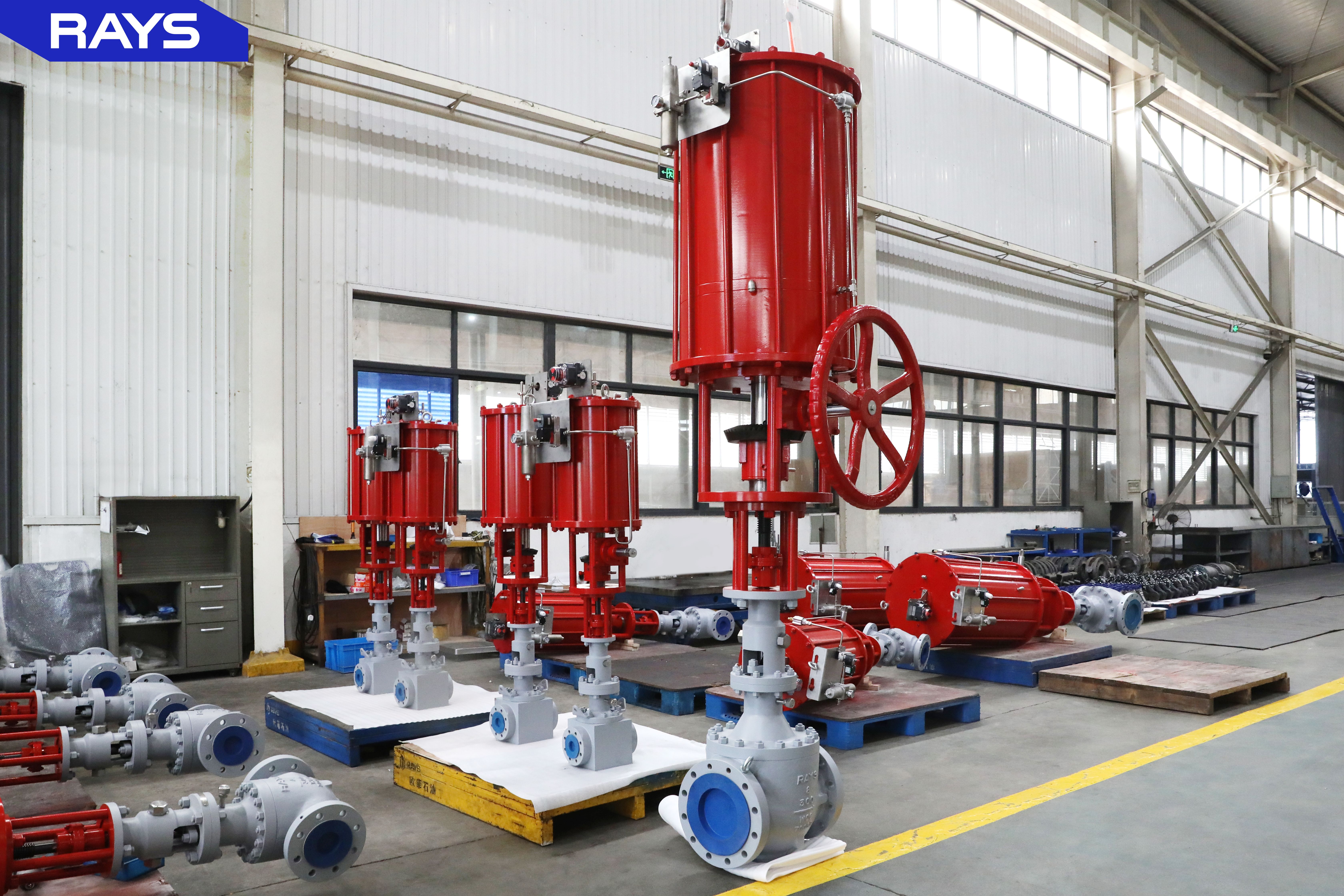In the energy sector of Southeast Asia, engineering projects undertaken by Malaysian state-owned enterprises are renowned for their stringent technical requirements. This is particularly true for critical processes in natural gas processing plants, such as LPG (liquefied petroleum gas) treatment and regen gas (regeneration gas) recovery systems, where valve equipment is held to extremely high standards in terms of reliability, sealing performance, and intelligent control.
Recently, the 20 units of 2-8 inch, 300 lb top-entry intelligent control rising stem ball valves we supplied to a Malaysian customer successfully passed project acceptance. These products were meticulously designed and manufactured in strict compliance with API 6D standards, and their exceptional sealing performance and intelligent control capabilities made them key equipment in the customer's LPG processing plant upgrade project.
This series of top-entry intelligent control rising stem ball valves is specifically designed for high-temperature and corrosive media conditions in the oil and gas industry. The products meet international standards such as API 6D, ISO 17292, and ASME B16.34, and have achieved SIL 3 functional safety certification. They fully satisfy the rigorous demands of Southeast Asian markets for valve reliability, intelligence, and long-term operational performance.
Working Principle of Rising Stem Ball Valves :
When the valve is in the fully open position, rotating the handwheel clockwise causes the valve stem to descend due to the interaction between the stem nut and thrust bearing, simultaneously driving the ball to rotate. As the handwheel continues to turn, the precision helical curve groove track on the valve stem engages with the guide pin embedded within it, guiding the ball to rotate 90° clockwise without any friction against the seat sealing surface.
Upon nearing the closed position, further rotation of the handwheel forces the valve stem to descend again, where the cam mechanism at the stem’s lower end mechanically presses the ball against the seat, ensuring a tight seal.
Product Features of This Top-Entry Rising Stem Ball Valves:
● Metal Hard-Seal Structure – Enhances high-temperature resistance and extends valve service life. The metal seat has a self-cleaning effect, reducing particle buildup on sealing surfaces and minimizing operational torque.
● Top-Entry Design – Allows direct online inspection and maintenance of pipeline-mounted valves, significantly reducing plant downtime and operational costs.
● Intelligent Control – Enables remote real-time monitoring and feedback of valve status, ensuring safe and reliable operation.
● Single-Seat Rising Stem Ball Design – Eliminates mid-cavity pressure buildup (a safety hazard in conventional designs) while reducing opening/closing torque.
The unique nature of the regen gas (regeneration gas) medium was one of the major challenges of this project. This type of gas typically contains fine particulate matter, which can cause erosion and corrosion on valve sealing surfaces over prolonged operation. Traditional soft-sealed valves are prone to material degradation and sealing failure under high-temperature and high-pressure conditions.
To address this, we adopted a metal hard-seal structure, with U-shaped butt joints for welded connections and a specialized STL alloy welding process. Compared to soft-sealed valves, this sealing method offers higher temperature resistance (up to 450°C or more) and maintains a leakage rate of ≤10⁻⁵ cc/sec (meeting ISO 5208 Class VI) even after long-term use. This design not only extends valve service life but also significantly reduces maintenance frequency, aligning with the oil and gas industry's demand for long-term stable operation.

Top-entry design was another key technical highlight of these rising stem ball valves. Unlike traditional welded ball valves, the top-entry design allows maintenance personnel to quickly disassemble the valve core and seat while the pipeline remains pressurized, drastically reducing downtime. This is particularly critical for continuous production facilities—where process pipeline shutdown windows are extremely limited—and directly impacts project efficiency and operational costs. Our solution enabled the customer to complete equipment replacement in the shortest possible time, avoiding unplanned shutdowns due to valve failures and delivering significant economic benefits.
Intelligent control represents the current trend in industrial valves and is a key demand in Southeast Asian markets. These Rising Stem Ball Valves are equipped with high-precision torque sensors and valve stroke feedback systems, enabling real-time monitoring of valve performance and data transmission to the plant’s control system. This design not only meets the customer’s requirements for equipment condition visualization but also facilitates predictive maintenance through data analysis. Additionally, all electrical components comply with ATEX/IECEx explosion-proof certification, ensuring stable operation in Malaysia’s harsh coastal environments with high humidity and salt spray.
The successful execution of this Malaysian project not only validated the technical reliability of our products but also strengthened our position in Southeast Asia’s high-end valve market. Moving forward, we will continue to focus on the core demands of natural gas processing, refining, LPG, and LNG sectors, delivering greater value to Southeast Asian customers through technological innovation and dedicated project teams.
In today’s increasingly competitive global market, true "localization replacing imports" relies not just on cost advantages but also on solid technical expertise and rapid response capabilities—precisely where we are committed to excelling.
